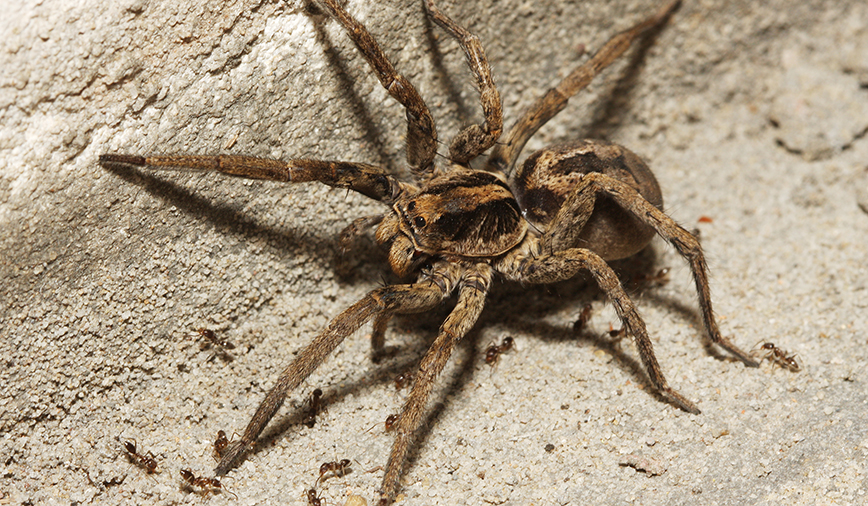We had a Little Miss Muffet Moment the other day here at the Pottawatomie Community Center. No, it didn’t involve a tuffet (which I understand is some sort of footstool), nor were there any curds or whey. But there was a spider. Man, was there a spider.
It showed up, quite unannounced, in Multipurpose Room 3, just as the members of our recreation department staff were beginning their new software training. Assorted coworkers had sat down beside one another when, just like in the nursery rhyme, along came that spider. Hairy and, in their words, “HUGE,” it definitely had the potential to frighten some people away.
From what I heard, there was a motion to squish the spider. But quick-thinking Krista, our early childhood supervisor, intervened, then dashed down to the naturalists office and asked us to rescue the hapless critter. Armed with a margarine tub, we did just that.
But the fun didn’t end there. Written somewhere in the naturalists’ manifesto there’s a clause that states something like, “Thou shalt not release a critter until thou has identified it, at least to a family level if not a genus and species.”
So out came the reading glasses, then the hand lens, then the LED hand lens because the light in the room was rather dim. It didn’t take long to make an i.d.—the eight shiny eyes, arranged in a family-specific pattern of four small eyes in a straight line in the first row, then two large eyes in the second row, and two medium-sized eyes in the third—made the job a snap.
The arachnid in question was a wolf spider, a member of one of our most common ground-dwelling, or “outdoor” spider families. Several different species live here in Illinois. Some are considered large, with body lengths of nearly ¾ inch (not including legs), and all are members of the family Lycosidae (lycos means wolf in Greek).
Wolf spiders are one of the unsung heroes of the creepy-crawly world, patrolling yards, gardens and parks in a never-ending search for prey, namely small- to medium-sized insects. As evidenced by their impressive array of ocular accoutrements, wolf spiders are sight hunters. That is, they don’t spin webs. Instead, they roam about on long, strong legs in search of prey, and pounce when the moment is right.
Another wolf spider trait, one we weren’t lucky enough to see this time, is the means by which females tend their young. Whereas many spiders (even Charlotte, perhaps the most famous spider of all) create an egg sac and call it a day, wolf spiders display a behavior as close to maternal instinct as you’ll see in the eight-legged world.
Once the silken egg sac is spun, mom wolf attaches it to her spinnerets, the web-spinning appendages at the tip of her abdomen. There the little brood of, say, 100 to 300 spiderlings, will stay until hatching. Maybe you’ve seen such a spider on your outdoor rambles: dark brown, usually with some sort of dorsal stripe, and a white ball stuck to her back end.
Once the eggs hatch, the story gets even more endearing. One by one the little spiders climb out of the sac and up onto mom’s back, like so many young toddlers going for a piggyback ride. There they’ll stay for about a week before debarking and starting life on their own.
This time of year, wolf spiders are on the move, looking for a sheltered spot to spend the winter. They can be found inside our garages, houses, even our community centers. The next time you’re sitting on your tuffet, eating your curds and whey, if a spider comes over, look a little closer. It might be a Lycosidae.
Pam Otto is the manager of nature programs and interpretive services for the St. Charles Park District. She can be reached at potto@stcparks.org or 630-513-4346.

